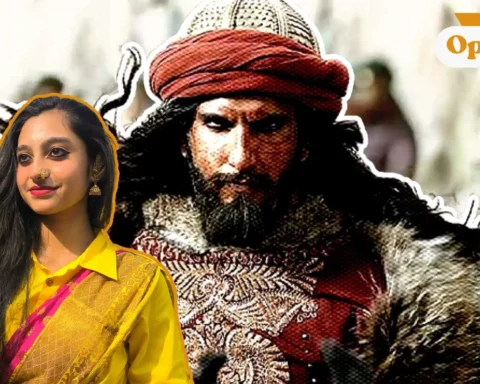Transformation has always been synonymous with the world of fashion, constantly changing to reflect the zeitgeist of the time. Yet, we have never witnessed such an audacious leap as the one currently unfolding before our eyes, the advent of NFTs and the Metaverse. This phenomena is now shaping the curves of the fashion runway, positioning itself as the avant-garde of the future. But a question that remains- are these virtual platforms the next inevitable course of history in fashion, or are they merely the result of a transient hype?
In recent years, some of the most celebrated fashion houses have traded their runways for blockchain technologies, discovering novelty in the expanse of the metaverse. The industry’s interaction with NFTs (non-fungible tokens) has grown exponentially, with big names such as Gucci, Balenciaga, and Dolce & Gabbana launching their limited edition digital wearables, integrating art and technology into a perfect blend of customer intrigue. Gucci’s 2021 virtual sneakers – GUCCI Virtual 25- which was sold for upwards of $12 per pair is an excellent example of this collaboration. Similarly, Dolce & Gabbana’s Collezione Genesi was able to sell over $6 million in NFT fashion pieces, marking a catharsis where the physical runway morphs into the digital in the most glamorous of ways.

At the surface level, the allure of NFTs is irrefutable. These tokens offer ownership and provenance to their customers in a digital landscape, which could theoretically disrupt the fashion industry as much as Instagram did in the sphere of fashion marketing over a decade ago. Metaverse- a digital utopia where brands and customers coexist in an alternate universe, is the heart of this phenomenon. Major fashion houses are racing to establish their presence in an attempt to gain from the prospective potential of this new frontier. Partnering with Fortnight, Balenciaga has released their latest collection of handpicked fits for the avatars. Ralph Lauren, on the other hand, has collaborated with Zepeto, a social virtual reality app.
The trajectory of Metaverse in the fashion industry shows steady growth, and its momentum shows no signs of waning. Yet, under all its grandeur, it is still a hyper realised reflection of consumerism. What’s more alarming is that this virtual world thrives on the same capitalist structures that are currently under the heated scrutiny of the real world. Professionals argue that metaverse could exacerbate the existing wealth disparities by creating a new class system consisting of elites who can afford to splurge on digital luxuries.
In a research article by Diana Tsai, “The NFT Revolution: Fad or Future?”, she argues that even though the technology behind NFTs is groundbreaking, its long-term sustainability in the fashion industry depends on whether they can move beyond their current speculative nature and develop a deeper intrinsic value, pointing out the fact that most NFTs exist solely for their shock value and prestige. Without prolonged utility, Tsai suggests, they are at the risk of becoming old history. The environmental impacts of NFTs have triggered a negative outlook as well.
The blockchain technology, which serves as the basis of NFTs, is notoriously energy-intensive. In a world of hyper-aware individuals and climate crises, where the fashion industry is under fire for its wasteful practices, the use of NFT increases the risk of alienating environment-conscious customers. A report by Memo Akten, “The Uncomfortable Truth About NFTs and Energy Consumption,” dives into the alarming carbon footprint left by blockchain technologies. The report cites that a single NFT transaction requires as much energy as a month’s worth of electricity in an average household. This questions whether the fashion industry, already drowning in sustainability controversies, can afford to adopt a potentially damaging technology.
If we are to dismiss NFTs and the Metaverse as mere hype it would underestimate the unfathomable ways they have altered consumer behaviour. Generation Z are highly gravitated towards digital platforms where they express themselves through avatars and virtual closets.
A 2023 report by L’Atelier BNP Paribas stated that virtual fashion purchases account for up to $50 billion by the end of 2030. The reason behind the fame of NFT is not in its novelty but in its potential to create experiences that resonate with a generation that grew up in a world of social media, video games, and digital ownership. For fashion brands, however, Metaverse has opened up unlimited artistic possibilities, creating a world where consumers can customise their virtual closet, design their own avatars and engage with fashion in real-time without being confined to physical retail spaces.
With the fashion industry hustling towards this digital utopia, the lines between hype and revolution have become blurred. where NFTs and the Metaverse represent a thrilling experience, breaking free from the physical constraints of fashion and introducing a world where creativity thrives, the impact of these technologies raises questions about inclusivity, ethics, and sustainability. The entry of NFTs and virtual reality in the fashion industry may not be a trend, but a sign of how digital technologies have become an integral part of our lives.
However, it is important to find a balance for its limitless creativity in order for it to truly succeed as a revolution. Only then will Metaverse be the next frontier of fashion, lest it should become just another dazzling distraction in an industry that thrives off of fleeting glories.

What are your thoughts on the NFT and metaverse boom in fashion? Do you believe it is the future, or just a fleeting trend? Let us know in the comments! And if you have opinions or topics of interest that you would like to share, feel free to reach out to larra@globalindiannetwork.com.









